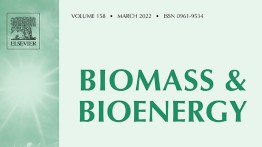Two Alumni and Assistant Professor Amanda Simson Published in the 2022 Biomass and Bioenergy Journal
POSTED ON: February 1, 2022

Cooper alumni Dave D. Chun ChE’21, Derek Ni ChE’18 ChE’20, and Assistant Professor of Chemical Engineering Amanda Simson recently published in the Biomass & Bioenergy Journal by ScienceDirect (Vol. 158, March 2022 Issue).
The publication “The Effect of Inherent Inorganics And CO2 Co-Pyrolysis on Biochar Production from Biowastes and their Gasification Reactivity,” investigates how feedstock selection influences the quantity and quality of biochars produced from pyrolysis of food waste and biowaste.
You can read the publication here.
ABSTRACT
In this work, we investigate how feedstock selection influences the quantity and quality of biochars produced from pyrolysis of food waste and biowaste. The influence of feedstock ash content on pyrolysis char yields and the resultant char's reactivity for CO2 gasification was measured. Higher ash content feedstocks had lower char yields while higher lignin content feedstocks had higher char yields after pyrolysis at 500 °C. The relationship between feedstock ash content and char yield was found to hold when isolating feedstocks with similar lignin content. Ash content was found to be important for gasification reactivity; biochars leached of inorganics with nitric acid had gasification reaction rates up to three times slower than their non-leached counterparts depending on the initial feedstock. The addition of CO2 during pyrolysis (up to 22.5% by volume), which has been shown to increase biochar surface area, was also investigated for six of the eight feedstocks. Certain feedstocks, like nutshells, had no change in pyrolysis char yields whereas other feedstocks like corncob and sunflower seed shells had higher char yields after pyrolysis with CO2. Overall, biochars formed during CO2 co-pyrolysis did not have significantly different reactivity for CO2 gasification, despite most of the biochars having higher moisture capacities, a proxy for surface area. The results show that ash content, and therefore feedstock selection, is important for biochar reactivity for gasification, and further, that investigating influences of pyrolysis conditions may also be feedstock specific.




